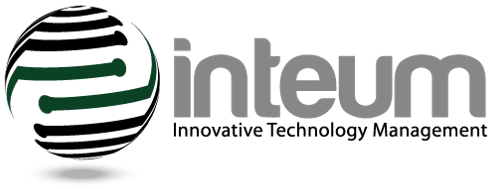Case Study
WASHINGTON STATE UNIVERSITY
Washington State University’s Office of Commercialization improved its invention disclosure process by utilizing Inteum’s Inventor Portal, reducing management costs and process time, while improving the experience for its researchers.

The Story
Washington State University (WSU) is a Tier 1 research institution untangling complex problems throughout its continued research efforts. Originally established as a land-grant university in 1890, WSU has now grown to encompass 11 colleges across its six campuses throughout the state.
Within WSU, The Office of Commercialization (OC) is responsible for the evaluation, protection, and commercialization of innovations and discoveries made by WSU researchers to contribute to WSU’s public impact. On average, the OC receives around 100 invention disclosures annually. Each of these goes through an extensive evaluation process to determine if the IP is patentable.

In 2018, Washington State University transitioned from a PDF-based invention disclosure process to Inteum’s Inventor Portal. The need for a web-based disclosure process with Inteum integrations was a necessary improvement that not only saved the OC time and resources, but also improved efficiency, data accuracy and created a more transparent workflow for researchers to understand, check on the status of their IP, and quickly communicate with the OC.
Since the launch of the Inventor Portal, researchers have embraced the Inventor Portal for its ease of use and the ability to always have access to their disclosures (vs lost in a pdf). The ultimate result since launching Inteum’s Inventor Portal has been a great success for not only the OC and researchers but for the university as a whole.
The Challenge
Like many technology transfer offices, the Office of Commercialization originally employed a static PDF-based workflow. When an invention was created, the researcher emailed the OC, which then sent a PDF form to the inventor to fill out. It usually took a few rounds of editing and fixing between the OC and the inventor before the information could be collected completely and accurately. Then the inventors had the burden of collecting multiple signatures along the approval chain before sending the form to the OC for evaluation.

“Chaos” is the word Cascade Herriott, Information Systems Coordinator at the Office of Commercialization, used to describe the disclosure process before implementing the Inteum Inventor Portal. When he shared their story at Inteum’s 16th Annual Global User Group Meeting, he said “(It) was a huge time sink for not only our office but also for the inventors. “
“(It) was a huge time sink for not only our office but also for the inventors. “
Cascade Herriott, Information Systems Coordinator, WSU Office of Commercialization, describing the static PDF-based workflow.
The Solution – Inteum Inventor Portal
Before WSU implemented the Inventor Portal, they clearly outlined a few key requirements:
- Data integration with the HR system, which contains the contact information for all WSU employees and students.
- Integrating these two databases together presented a professional appearance for the OC and promoted enterprise level disclosure process that eliminated the need for inventors to enter in their own contact information, plus allows Inteum to be up-to-date at all times as inventors move across the university.
- Automate the approval process and signature collection.
- Inteum’s Inventor Portal has built in functionality to perform this task.
- Automate the workflow and send automated alerts for outstanding issues like incomplete disclosures and public disclosures in the near future.
Inteum’s Inventor Portal was an easy choice based on those requirements. Since WSU has already been using Inteum to manage technologies and contracts, implementing the Inventor Portal was a simple solution with countless benefits.
The Inventor Portal is a web component that collects information online and exchanges data with the Inteum database. It is part of the standard subscription for all Inteum customers.
Single Sign-On
For familiarity and ease of use, Inteum’s team helped WSU implement its built-in SSO authentication for the Inventor Portal so that inventors and other university personnel could quickly, and easily log in with their university network IDs.
Below, on the left, is the default Inventor Portal login page. On the right is the new login page with SSO. It shares the same look as the login pages of other systems used throughout the WSU system.

Role-Based Record Access Control
Inteum’s record access control function allows WSU to engage with more people throughout the disclosure process. To encourage and educate more researchers to disclose their inventions, WSU has set up a role called “college partners”. These are WSU administrators with personal experience in research commercialization at each college. They help advocate for the Office of Commercialization and work with the inventors to shape their inventions for a higher chance of success.
WSU set up record access control so that these college partners can only access the disclosure records from the college they represent. The college partners get a notification when a new invention is disclosed from their college so that they can view what’s being disclosed and start working with the inventors immediately to fine-tune the invention.

Automated Workflow with Electronic Signatures
Leveraging Inteum’s Sentinel Notification System and granular record access control, WSU implemented a highly automated workflow that nudges users along through the process. When an inventor initiates the disclosure process but does not finish it, the system will send out reminders encouraging them to complete it. After the disclosure is submitted, the system sends notifications along the approval chain and collects electronic signatures, as illustrated below.

Web-based Form with Conditional Questions
The WSU team re-created its PDF invention disclosure form on the Inventor Portal incorporating business logic. Now, when a new invention is created, the researcher simply logs in to the portal, fills out the web form and submits it. The system automatically validates the input and prompts the researchers to fix any invalid or incomplete answers before they are able to hit the submit button. With the aid of this conditional logic, the form becomes dynamic and the system can present questions as needed, thus collecting complete answers while avoiding confusion for the researcher.
The Benefits
Inteum’s Inventor Portal has greatly improved the efficiency and accuracy of WSU’s invention disclosure process.
Reduce Overall Process Time
- Inteum’s Inventor Portal helps researchers complete the questionnaire quickly and effectively, while eliminating rounds of emails between researchers and the Office of Commercialization staff.
- Automated alerts help everyone involved work together smoothly with little delay.
- E-signatures greatly reduce the time needed to collect all the required signatures.
Overall, the time it takes from the creation of an invention to evaluation is greatly reduced. It buys more time for patent filing and commercialization.

Lower Cost
After implementing the Inventor Portal, the number of staff members required to oversee the disclosure process for the entire university has been reduced to one. It also allows WSU to avoid engaging licensing officers until all of the information has been filled in correctly and completely with all of the signatures in place, thus freeing up more time for the licensing officers.
Happier Researchers
Inteum’s Inventor Portal alleviates the burden for researchers, gets them help from the college partners faster, and enables them to view the status of their disclosures while allowing them to communicate with the OC about their disclosure at any time.
Stronger Office
Inteum’s Inventor Portal makes WSU’s Office of Commercialization a much stronger and more efficient office. First, it helps the OC adopt a more professional appearance within the university. It increases transparency throughout the process, making the inventors more likely to work with them. It also improves the accuracy of the information they manage.
